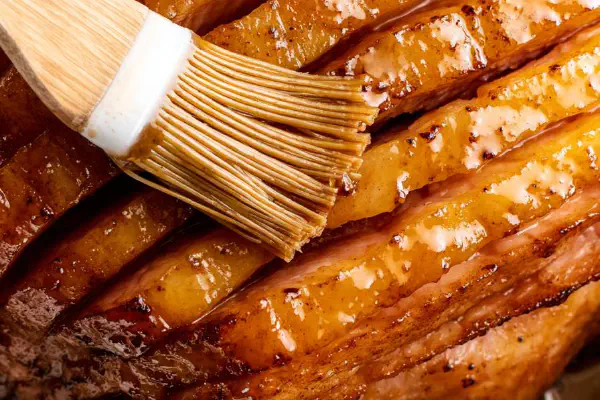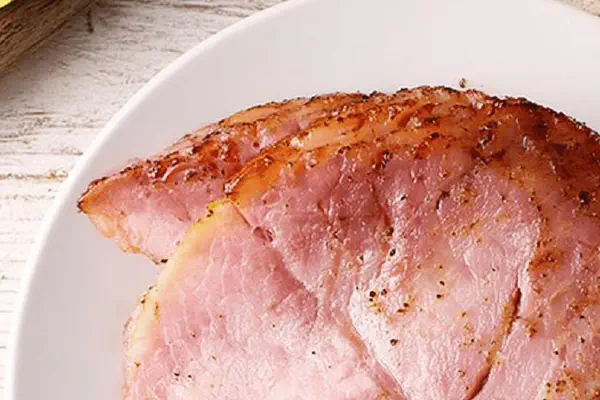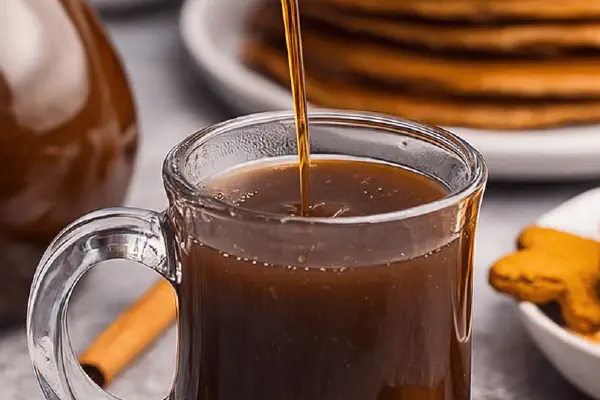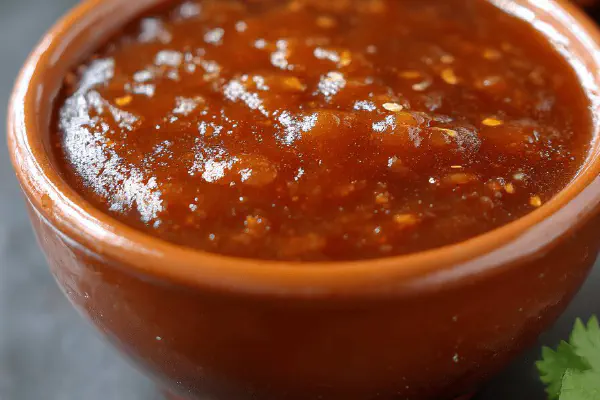Apple Cider Reduction
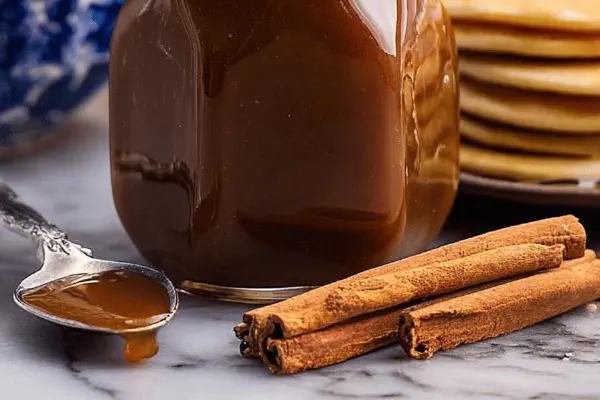
By Emma
Certified Culinary Professional
Ingredients
- 3 tablespoons arrowroot powder
- 1 1/2 teaspoons ground cinnamon
- 1 teaspoon ground allspice
- 1 teaspoon ground ginger
- 1/4 teaspoon ground cloves
- 1/8 teaspoon fine sea salt
- 3 tablespoons coconut sugar
- 4 cups apple cider
- 1/4 cup apple cider vinegar
- 2 tablespoons unsalted butter
- 1/2 teaspoon ground star anise
About the ingredients
Method
- Start by tossing arrowroot, cinnamon, allspice, ginger, cloves, star anise, salt, and coconut sugar into a small bowl; stir until evenly distributed. Arrowroot chosen for cleaner thickening and clearer finish. Coconut sugar replaces brown sugar to reduce molasses edge and provide caramel notes.
- Pour apple cider and apple cider vinegar into a medium saucepan — medium heat, no rushing. Toss in butter to melt gently, injecting silkiness and tempering acidity. Watch for tiny bubble rims forming around the edges.
- Sprinkle dry mix into the pan in a slow stream while stirring briskly. Avoid dumping all at once to prevent clumps — you want a slick slurry, not hardened bits. Feel the consistency shift; when it thickens slightly, lower the heat a notch.
- Stir almost constantly; bubbles should rise, pop gently, and sound grittier than a rolling boil, with steam smelling sharp and fragrant. The color deepens to a warm amber, losing that watery shine. About 12 to 15 minutes, but watch cues, not the clock. If syrup feels too runny, keep simmering; if too thick, splash a little cider and stir.
- Take off heat when the syrup clings to the spoon, stretching but not breaking immediately. Set aside for 8 minutes to cool slightly and set; syrup will thicken more as it rests. Don’t overcool or it turns gluey. Rewarm gently if needed before serving.
- Serve warm or at room temperature over pancakes, roast veggies, or as a glaze for pork. Store leftovers in jar, refrigerate, reheat gently with splash of cider to loosen. Watch for graininess after stored long.
- If there are lumps, quickly whisk with a little cold cider or water to smooth; don’t over-stir while hot or will break down texture. Butter adds richness and helps with mouthfeel but can be omitted for vegan variation, increasing vinegar slightly for balance. Star anise adds complexity but swap with cardamom or nutmeg to shift profile.
- Remember: thickening agents behave differently with heat intensity and timing. Arrowroot sets faster and transparent; cornstarch will make it slightly cloudy and more opaque.
- Don’t run off if you've messed up the timing; adjust by stirring in small amounts of cider to rescue the texture. Trust your nose and eye, not timers. Aromatics cook out over time, so if it smells too sharp, give it a minute off heat before serving.
Cooking tips
Chef's notes
- 💡 Dry mix tossed evenly upfront; prevents lumps and burnt specks. Arrowroot thickens faster and stays more transparent than cornstarch. If using cornstarch, dissolve it cold first, half the amount. Takes more time, clouds syrup slightly ; know this and adjust.
- 💡 Stirring almost nonstop matters. Gentle bubbles that pop slower mean sugars and starches merging. Bigger slow bubbles, amber color shift—watch carefully, timers lie. Heat medium low; too hot burns sugars and spices, ruins flavor with bitterness.
- 💡 Butter melts early to soften vinegar sharpness; adds silkiness but omit for vegan. Add vinegar slightly more then to balance mouthfeel. Coconut sugar deepens sweetness with caramel notes, swaps for muscovado or white sugar if needed; each changes color and flavor weight.
- 💡 If syrup feels too thick, splash cold cider back instead of water to keep flavor intact. Too runny? Low simmer, watch bubbles and smell they sharpen and sweeten; aroma changes faster than timers. Rest syrup off heat 8–10 minutes for thickening ; cool too much turns gluey.
- 💡 Lumps happen if sprinkling dry mix fast. Slow stream, brisk stir to keep slurry slick. Whisk lumps immediately with cold cider or water before cool stiffens. If graininess after storage, reheat gently with cider splash; reheating too hard breaks texture and crystallizes.
Common questions
Why arrowroot instead cornstarch?
Sets quicker, clearer syrup, less cloudy. Cornstarch thickens slower and makes syrup opaque. Need to dissolve cornstarch cold first or lumps. Arrowroot breaks down if overcooked, so timing matters.
Can I skip butter?
Yes but then vinegar sharpness rises; add about 1 tablespoon more vinegar to balance. Vegan cook option. Butter adds mouthfeel, richness, and softens that acid edge from vinegar and cider.
Syrup lumpy or grainy after cooling?
Usually dry mix added too fast or cooked too high heat. Whisk lumps immediately with cold cider or water. For graininess after storage, reheat gently with splash cider; avoid boiling reheats or it crystallizes and toughens.
How to store and reheat?
Cool fully in jar, refrigerate tightly sealed. Reheat gently on low with splash cider or water to loosen. Can freeze but texture may change. Avoid rough stirring or overheating on reheats to prevent grainy or separated texture.
